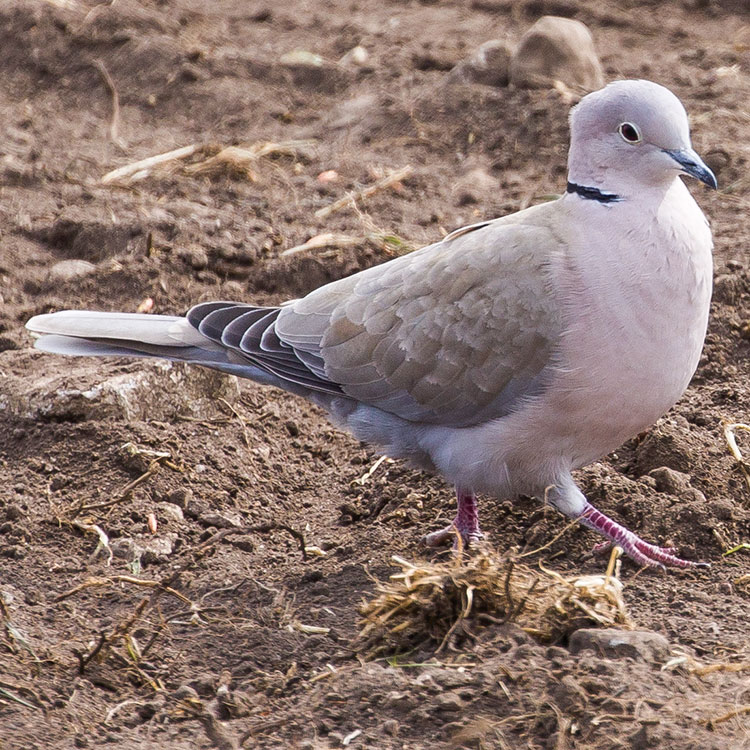

It feeds mainly on the ground, but it also can perform short rising flights to take a berry in a scrub. The Eurasian Collared-Dove feeds mainly on seeds from cereals and grasses, but it also takes some buds, fruits, berries, insects and other invertebrates. At this period, both mates are often seen perched on exposed branch, touching their bill lovingly, as kisses, on head and neck. When it lands, it utters a nasal “kwourrr”.Īt other moments, it bows towards the female (which ignores it and goes away) while cooing intensely. Then, it flies down by soaring with fanned tail. The flight display shows the male taking off abruptly from its perch with noisy wing slapping in order to rise. The courtship displays of the Eurasian Collared-Dove are very beautiful, partially aerial, but also on the ground or in tree. The most part of the population is sedentary in its range, but young may perform dispersions, according to the country, elevation and seasons. In urban areas, it takes bread crumbs and debris found on the ground. It feeds only on the ground, but it may frequent the bird-feeders in winter, mainly with sunflower-seeds. It also catches some insects and invertebrates. This bird is mainly a grain-eater, taking all kinds of seeds from wild or cultivated plants, but also fruits and berries. The undertail feathers are dark grey at the base, and definitely clearer, almost white, at tips, except the median rectrices which are grey. On the other hand, belly and flanks are rather pale grey, whereas the undertail coverts are darker.

The underparts show more pinkish chin, throat, neck sides and chest. When the wing is closed, the fore edge appears bluish grey. The adult male has buffy grey-brown upperparts, but the back is greyer. The Eurasian Collared-Dove is colonizing the planet, like the House Sparrow or the Common Starling. The nest is usually in tree, shrub, against the trunk, not always well hidden. The construction of the nest, even hard, does not lead to an artwork, but rather to a small loose platform made with some coarsely woven twigs, from where the eggs often fall. Its cooing more or less accentuated according to the period can be tiresome, but what prettier to look at than two turtle-doves preening each other or touching their bills lovingly? The flight displays produce wing slapping and while the male bows, we can hear soft cooings. This species appreciates the sunflower seeds but does not scorn the others. It is gregarious and we can see groups of several birds at bird-feeders in winter. The Eurasian Collared-Dove is omnipresent all year round.


 0 kommentar(er)
0 kommentar(er)
